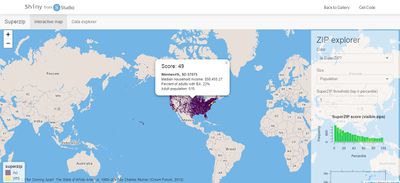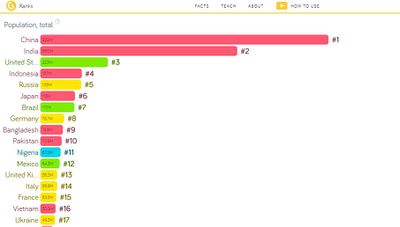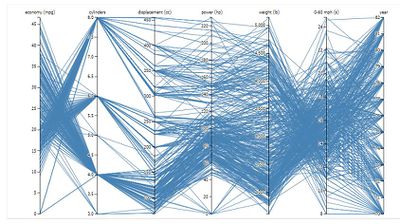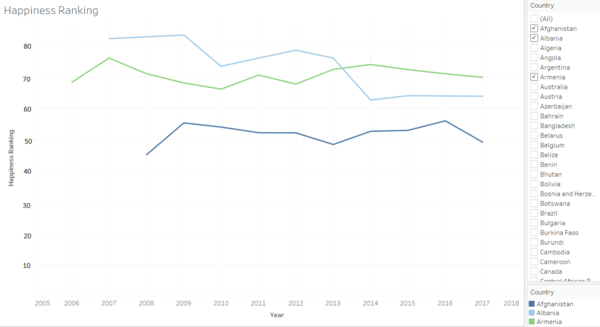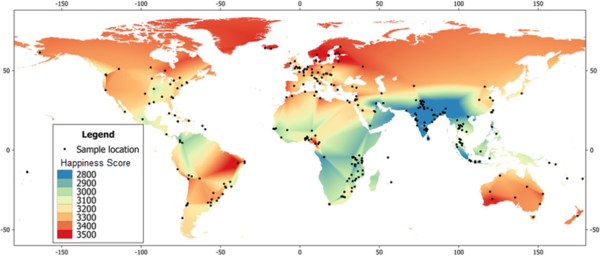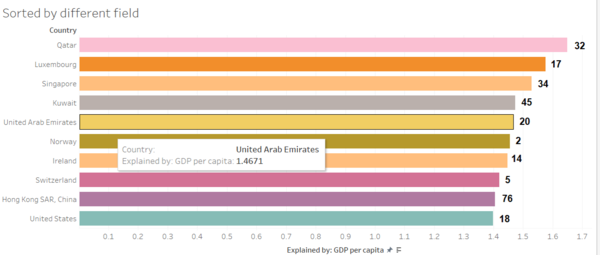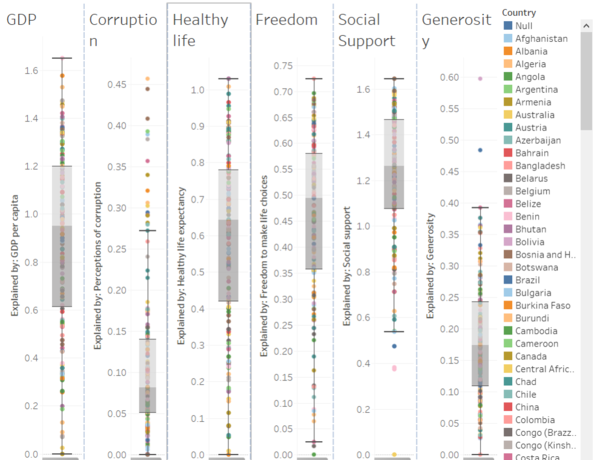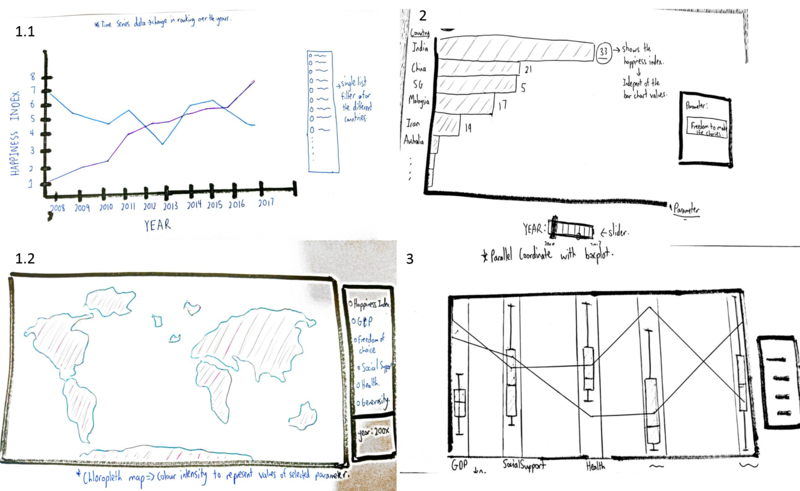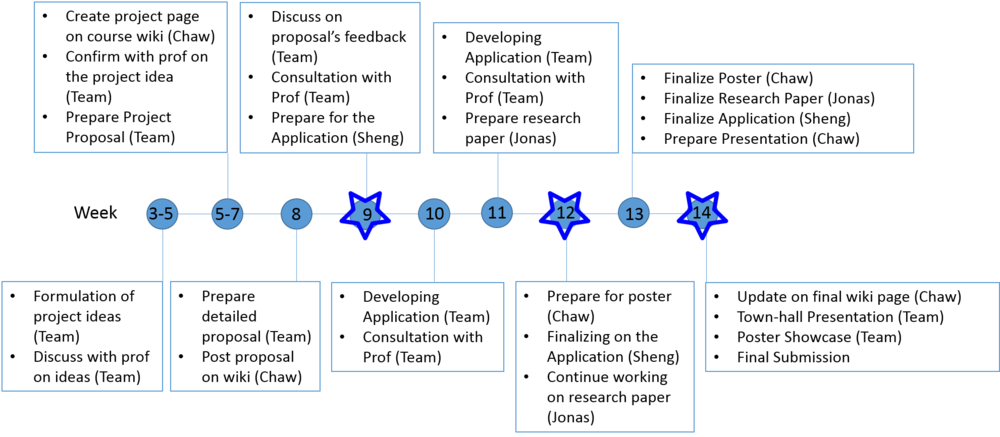IS428 Team wiki: Group12(CJS) Proposal Previouse
Problem Since 2012, the United Nations Sustainable Development Solutions Network (SDSN) has been publishing a world happiness report that presents the happiness levels of 156 countries. 6 parameters that include GDP per capita, social support, healthy life expectancy, freedom to make life choices, generosity, and perception of corruption are used to come up with the happiness index for these different countries.
Our visualization, thus, explores the different trends between these 6 parameters and the final happiness index to see exactly which parameters has a higher weightage in the final score.
Motivation The United Nations SDSN reports the happiness ranking of the individual countries yearly. However, trends regarding these 6 parameters are not clearly presented in each of these reports. Importance of such trends can be recognized when we taking the example of Singapore. In 2018, Singapore’s was ranked 34th out of 155 countries in terms of happiness. Though this may seem somewhat high, when compared with their 26th ranking in 2017 will we realise that Singapore is becoming a less “happier” country. Hence, it is important that such trends be explored into to get a clearer understanding of what makes a happy country.
Secondly, the reports does not accurately define which of the 6 parameters play a bigger role in deciding the final happiness index of the various countries. A country ranked first in the world happiness index might not rank first in one of the 6 factors. Thus, it could be interesting to identify the relationship between the happiness index and the 6 different factors that contribute to it and identify what make a happier country as per the standards of UN. Perhaps, consistencies or inconsistencies across the yearly reports years could be observed.
1. Identify the overall trends of happiness ranking index of countries over the years between 2013 to 2017
2. Identify the rankings of the each of 6 parameters that make up the happiness index of countries from the years 2008 to 2017
3. Compare the 6 parameters between the selected countries and see how they fare in relation to their final happiness index ranking from the years 2008 to 2017
4. Identify whether there has been a change in the weightage for the individual parameters towards the final happiness index ranking from year to year. (Tentative)
| Dataset/ Source | Data Attributes | Rationale of Usage |
|---|---|---|
|
World Happiness Report Data 2006-2017 |
|
See the overall performance of each individual country changes from year 2006 onwards |
| World Happiness Report Data 2017 https://s3.amazonaws.com/happiness-report/2018/WHR2018Chapter2OnlineData.xls |
|
Show data of one particular year(2017), its overall score and thus can get how the final happiness score is calculated |
Our visualization are inspired by the following works:
| Reference Visualization Work | Our Team's Take-away |
|---|---|
| |
| |
|
| Visualization | Description |
|---|---|
|
Purpose:
A general view that presents time series data of the happiness ranking between the different countries from the year 2013 to 2017.
| |
|
Purpose:
To show the geographical distribution of the happiness index and the 6 parameters for selected years using a chloropleth map. This helps the user identify trends between regions. For example, users could see if Asian countries are “happier” than African countries.
| |
|
Purpose:
To identify any correlation between the 6 sub-factors and the happiness index. Users can see, for example, what the happiness index rankings are for countries with just the highest GDP
| |
|
Purpose:
To help identify trends between the 6 parameters among the different countries.
|
| Key Technical Challenges | Proposed Solution |
|---|---|
|
No centralized data. Data are all divided year by year. |
|
| Unfamiliar with Visualization Tools |
|
| Unfamiliar with R as a new programming language |
|
Please check out our visualization sketch to better understand the process.
For section 1(left side of the above image), users would be greeted with a general view of the data from 2008 to 2017 through the time series data and the geographical distribution visualisation. This section aims to fulfill objective 1. Users can hover over the map and see the 6 parameters that make up the happiness index of the country in the specific year. User need to select the year for Chloropleth map.
Visualization presented:
- Line Graph
- Chloropleth map
Section 2(top right of the image) presents a more drilled down view as trends specifically related to the 6 parameters that make up the final happiness index can be seen here after the user selects the parameter and year. Tentatively, user would only need to select any one of the 6 parameters and the chart will change dynamically according to the year. This section aims to fulfill objective 2.
Visualizations presented:
- Bar Chart
For the section 3(bottom right of the image), the different y-axes represent the different parameters and lines are plotted for all the different countries.This section aims to fulfill objective 3.
Visualizations presented:
- Parallel Coordinates
Milestones are indicated with the star.
- https://s3.amazonaws.com/happiness-report/2018/WHR2018Chapter2OnlineData.xls
- https://s3.amazonaws.com/happiness-report/2018/WHR2018Chapter2OnlineData.xls
- http://shiny.rstudio.com/gallery/superzip-example.html
- https://www.gapminder.org/tools/#$chart-type=barrank
- https://bl.ocks.org/jasondavies/1341281
Please provide us with any comments to improve our visualization better.

